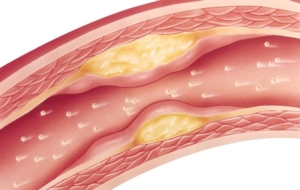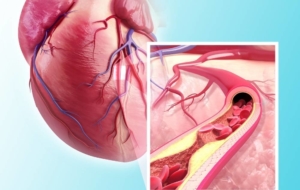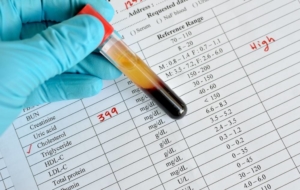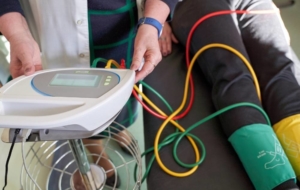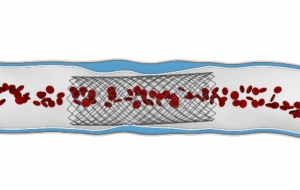When you think of erectile dysfunction (ED), you probably think of a temporary issue that is related to stress or aging. Even in the early 20th century, doctors thought ED was a purely psychological issue. Although right before the 21st century, researchers officially recognized that poor blood flow as well as plaque buildup within the arteries (atherosclerosis) was indeed the most common two causes of erectile dysfunction. ED is known to be a common issue affecting 40% of men before the age of 40 and close to 70% of men by the age of 70. However, there are many different causes of ED that you should be aware of.
Shockingly in recent studies, researchers have found that vascular and circulation issues can often be a precursor to peripheral artery disease (PAD) and coronary artery disease (CAD). Approximately 150 million people are affected worldwide by PAD and ED and over 75% of men with CAD also have ED. That’s why, doctors have recently been testing men with ED for vascular conditions like CAD and PAD in order to catch those conditions as early as possible.
Atherosclerosis and Erectile Dysfunction
To get and keep an erection, your arteries have to be in good, working condition. This is because as your heart pumps, your blood travels through the arteries to get to different parts of your body, including the penis. Unfortunately, an erection can only occur if the blood can travel through the pelvic bone and femoral artery.
If you have erectile dysfunction due to arterial insufficiency, you will have low blood flow to the penis. Poor arterial circulation can be a sign that your plaque buildup has become severe which could potentially lead to a stroke, heart attack, or even amputation. This means that atherosclerosis and erectile dysfunction go hand-in-hand and should be a signal that your arteries aren’t circulating blood throughout your body.
Additionally, erectile dysfunction due to arterial insufficiency can mean that at least some of the blood vessels in your pelvis and legs are being clogged. Even if the artery isn’t fully blocked yet, the lining of your blood vessels might be inflamed which causes accumulation to occur.
Signs of Peripheral Artery Disease: Erectile Dysfunction
As stated above, studies have shown that erectile dysfunction can be an independent predictor for both peripheral artery disease and coronary artery disease. If you are experiencing erectile dysfunction and you’re over 50 years old, you should get tested for both PAD and CAD.
Thankfully, ED caused by blockages in your arteries is considered to be an early sign because only some of the blood vessels may be partially blocked. If you have erectile dysfunction and you’re over 50 years old, contact your doctor or a vascular specialist to get evaluated.
Even if you’re not experiencing ED or other sexual health issues, there are other symptoms you should be aware of.
Click the image below to learn about other PAD symptoms.
If you’re experiencing any of these symptoms, you may have peripheral artery disease. A vascular specialist can determine the severity of your condition through non-invasive tests. With PAD, some people may experience little to no symptoms. That’s why it’s crucial to get regularly tested if you have a family history of vascular disease, diabetes, high cholesterol, or other PAD risk factors.
Erectile Dysfunction, Peripheral Vascular Disease, and Coronary Artery Disease
Unfortunately when it comes to erectile dysfunction due to arterial insufficiency, it’s not just peripheral artery disease that you have to worry about. Erectile dysfunction is linked to coronary artery disease (CAD), also known as heart disease.
New studies conducted in Australia and published by Medical News Today showed that, “the men with severe ED and without known cardiovascular disease (CVD) had a relative 35% greater risk of hospitalization for all CVDs and a relative 93% elevated chance of all-cause mortality, compared to those with no erectile problems.” These studies continue to show doctors that patients with ED should be closely monitored to understand their risk of developing vascular diseases like CAD and PAD in the future. Thankfully, there are a few signs and symptoms you can look out for if you have erectile dysfunction and are over 50 years old.
Does High Cholesterol Cause Erectile Dysfunction?
Atherosclerosis and erectile dysfunction are often caused by high cholesterol levels. This is because too much cholesterol in the blood can cause plaque buildup on the walls of your arteries. Over time, dangerous levels of arterial plaque will narrow and harden arteries leading to atherosclerosis, as well as PAD and CAD. Lowering cholesterol levels by watching your diet as well as exercising regularly can reduce your risk for peripheral artery disease, erectile dysfunction, and coronary artery disease.
Low-density lipoprotein (LDL) is the waxy substance that flows through your bloodstream and can accumulate on the walls of your arteries. If your cholesterol is 240 or higher, your levels are elevated and should be monitored and reduced. If you have erectile dysfunction and you’re over 50 years old, you should monitor your cholesterol levels and get tested for PAD. This can help you avoid serious health risks like stroke, heart attack, limited mobility, and gangrene.
Using an Ankle-Brachial Index to Diagnose PAD and ED
If you’re worried about atherosclerosis and erectile dysfunction, you can get tested to see if you’re at risk for peripheral artery disease. A non-invasive ankle-brachial index (ABI) test will compare the blood pressure in your upper and lower limbs to determine the severity of your PAD. In a study published by the National Library of Medicine (NIH), researchers stated that men with erectile dysfunction should be screened for PAD with an ABI test. They found that 45% of patients they screened had ED and out of that group 23% also had peripheral artery disease.
Additionally, they stressed the importance of proactive testing because 66% reported no lower extremity symptoms associated with PAD before the study. This means that those patients were probably unaware that they had erectile dysfunction due to arterial insufficiency and PAD because they exhibited no symptoms. They concluded that men with ED were found to have significantly more PAD than men without ED, which showed that doctors should be regularly screening for PAD and ED if one or the other is present. Using a simple ABI test could be a proactive way to lower the patient’s risk of heart attack, stroke, and gangrene.
Peripheral Artery Disease and Erectile Dysfunction Treatment
Whether you have been diagnosed with PAD or ED, it’s important to understand that if you have one you should also be tested for the other. PAD and ED are both treatable diseases, especially if they are caught early. Treating peripheral artery disease often relieves erectile dysfunction by allowing for proper blood flow.
At USA Vascular Centers, our specialists treat PAD and ED with a nonsurgical, outpatient treatment known as stent angioplasty. Using the natural pathways within the body (the arteries) our doctors place a stent within the affected artery pushing the plaque to the walls. Once the stent is placed, blood will be able to flow freely and fix low blood flow to the penis as well as the lower extremities.
If you’re experiencing leg pain, non-healing wounds, poor toenail/leg hair growth, or erectile dysfunction due to arterial insufficiency and plaque buildup, you should get tested for PAD. Give us a call at 888-773-2193 or contact us conveniently online.
Scheduling your initial vascular consultation only takes a few minutes. Don’t wait for your PAD symptoms or erectile dysfunction due to arterial insufficiency to worsen, take the next step with us today.

